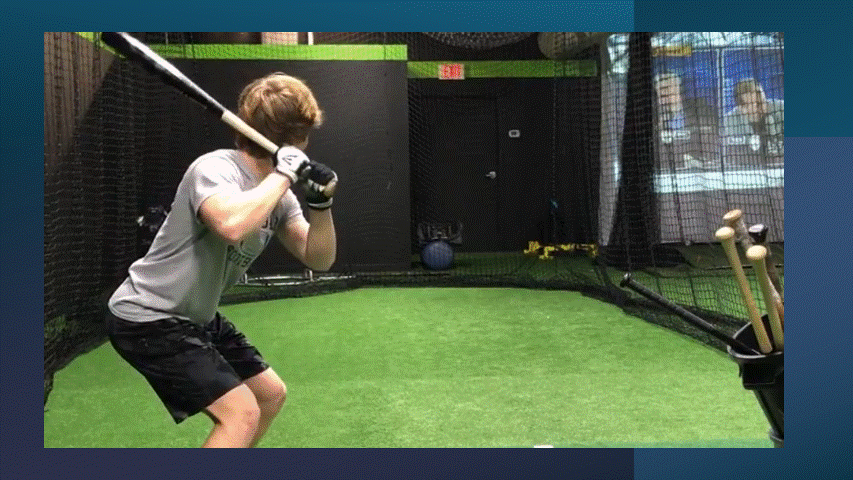
Misconceptions About Early Barrel Entry and Bat Speed in Hitting Dynamics Part II: The Role of Weight Distribution in Bat Lag vs. Early Barrel Entry
By Ken Cherryhomes ©2025
Introduction
In my previous article, I discussed common misconceptions about early barrel entry and its impact on swing dynamics. In this follow-up, I want to delve into a critical, yet often overlooked, factor that plays a significant role in hitting: the bat’s weight distribution.
The Physics of Bat Weight
A baseball bat is not uniformly weighted; its mass is disproportionately concentrated toward the barrel. This distribution of weight has profound implications for how angular momentum is generated during the swing. Understanding this principle is key to recognizing the trade-offs between bat lag and early barrel entry.
Bat Lag: Harnessing the Bat’s Weight
In a swing with proper bat lag, the barrel remains behind the hands as the kinetic sequence unfolds, creating a dynamic interaction between the hitter’s biomechanics and the bat’s weight distribution. The barrel’s disproportionate mass actively amplifies the rotational force generated by the body. As energy flows from the lower body through the core and into the hands, the bat’s weight distribution becomes a vital contributor to this process, culminating in a whip-like action that accelerates the barrel into the hitting zone with maximum force.
Here’s why this matters: as the bat rotates around the body, the concentrated weight at the barrel amplifies angular momentum. The barrel’s mass distribution contributes significantly to the swing’s rotational force, acting as a multiplier for the energy already generated by the body. This additional rotational force is what allows the hitter to achieve maximum bat speed and transfer kinetic energy efficiently to the ball at contact. In essence, the bat itself becomes an active participant in producing power, amplifying the force generated by the body.
The Misconception of Snap-and-Turn “Lag”

Advocates of the snap-and-turn (HLP fits this description) approach argue that their barrel is “behind the hands,” which is true in a positional sense. They may even suggest ‘cutting off the arms and installing the hands at the shoulders’. However, what’s missed in this approach is the difference in how the barrel’s weight distribution impacts angular momentum when it enters the zone early. With early barrel entry, the whip-like effect of lag is bypassed, cutting short the rotational buildup that fully utilizes the barrel’s mass. The barrel is indeed still behind the hands in early-entry swings, but its early arrival in the zone diminishes its ability to amplify force, as the arc is completed before angular momentum is maximized.
A Crucial Illustration: Mass Distribution in Action

To better understand how bat lag works, consider what happens when you throw a bat forward, handle first. As demonstrated in the accompanying GIF, the bat doesn’t travel in a straight line like a spear. Instead, the barrel’s heavier weight causes it to naturally pivot and rotate, pulling itself into alignment behind the handle. This motion vividly illustrates the principle of how a mass at the end of an object contributes to rotational dynamics.
In the context of a swing, the same principle applies. The bat’s weight distribution works in tandem with the hitter’s biomechanics to amplify angular momentum. When the barrel lags behind the hands, it capitalizes on this weight distribution, allowing for a more powerful and efficient rotation. The barrel’s mass not only enhances the whip-like action of the swing but also maximizes energy transfer at contact—force that would otherwise be lost with an early-entry approach.
Force Through Timing and Sequence
The timing and sequencing of bat lag are key to harnessing this effect. When the barrel lags, it enters the zone later but with greater velocity and force because of the efficient buildup of angular momentum. Early entry sacrifices this buildup for a quicker path, but at the cost of diminished force at contact. The hitter, therefore, misses out on the unique advantage offered by the bat’s weight distribution, resulting in weaker and less impactful hits.
Early Barrel Entry: Missing the Mark
The snap-and-turn approach, often associated with early barrel entry, skips the critical lag phase where the barrel’s weight is fully leveraged to build angular momentum. By snapping the barrel rearward and bringing it into the zone early, hitters create a quicker path but bypass the rotational buildup that maximizes energy transfer. As a result, the barrel completes its arc before rotational force is fully developed, sacrificing both bat speed and power at contact.
This method might seem advantageous for achieving quickness, but it underutilizes the bat’s weight distribution. Unlike a lagging barrel, which capitalizes on its disproportionate mass to amplify force, early barrel entry prioritizes speed at the expense of overall efficiency. While it may suit specific scenarios, such as facing high-velocity pitches, it limits the swing’s adaptability and power potential.
Why This Disconnect Matters
The misunderstanding here stems from viewing the bat as if it were a uniformly weighted object, ignoring the role its disproportionate barrel weight plays in swing dynamics. By eliminating lag, the snap-and-turn approach fails to utilize this built-in advantage of the bat’s design. For hitters who rely on power and adaptability, this trade-off can severely limit their performance at the plate.
Conclusion: The Bat as a Partner in Power
The bat’s design—specifically, its disproportionate weight distribution—is not a passive feature but an active contributor to the physics of the swing. Proper sequencing and bat lag unlock this potential, allowing hitters to generate maximum angular momentum and energy transfer. Early barrel entry, while quicker, forfeits this advantage, prioritizing speed over power.
In understanding the role of weight distribution, hitters and coaches can better appreciate the trade-offs between quickness and power, aligning their strategies with the true mechanics of the swing. By embracing the bat’s design as a partner in power, they can move closer to achieving the perfect balance of speed, precision, and adaptability.